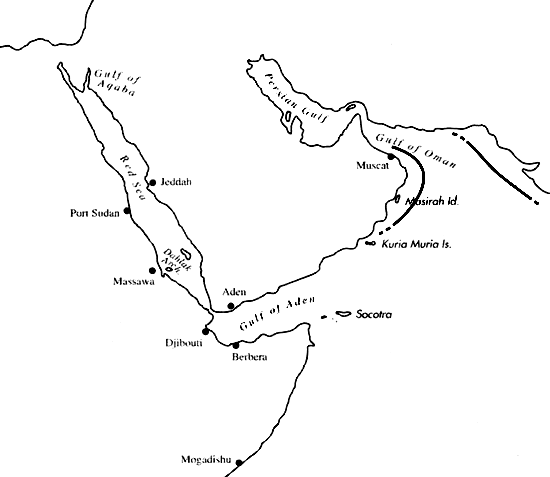Range: Masirah Id. and Masqat, Oman; Pakistan.
Description: Moderately small to medium-sized, moderately light to moderately solid. Last whorl usually conical, outline almost straight or slightly convex adapically. Shoulder angulate. Spire of moderate height, outline concave. Larval shell of 1.75-2 whorls, maximum diameter 0.9-1 mm. First 1-4 postnuclear whorls tuberculate. Teleoconch sutural ramps slightly concave to concave, with closely set radial threads and 0-2 increasing to 2-4 spiral grooves, grading to many spiral striae on latest ramps. Last whorl with rather regularly spaced, axially striate spiral grooves from base to centre, separated by ribs at base and by ribbons above.
| Shell Morphometry | ||
|---|---|---|
| L | 28-45 mm | |
| RW | 0.07-0.10 g/mm | |
| RD | 0.50-0.58 | |
| PMD | 0.84-0.93 | |
| RSH | 0.11-0.18 | |
Ground colour grey or bluish grey. Last whorl with confluent brown axial clouds and flames, often forming incomplete spiral bands within basal third and near centre, and sometimes below shoulder. Spiral rows of brown dots and dashes extend from base to subshoulder area, separated by regularly intermittent white markmgs in most rows, less so toward base. Base and basal part of columella brown. Larval whorls and about first 1-2 teleoconch sutural ramps brown. Following ramps usually with brown radial streaks or blotches, separating into variably set dots at inner margins and sometimes extending across outer margins. Aperture brown, darker at anterior end.
Radular teeth very small, with an adapical barb opposite a long narrow blade; central waist and strong basal spur present, serration absent (Rolán, pers. comm., 1993; G. Raybaudi-Massilia & Rolán, in press).
Habitat and Habits: Shallow subtidal, among stones (Oman; Bosch & Bosch, 1982); in 20-25 m (Pakistan).
Discussion: Until Coomans and Moolenbeek proposed this Conus population from Oman as a separate valid species, it was assigned to C. traversianus or C. dictator, or erroneously named C. lemniscatus Reeve (see Vol. 2) by various authors (e. g. Walls, [1979]; Bosch & Bosch, 1982; Lauer & Richard, 1989). C. lemniscatus from Brazil is a larger species that can be mistaken neither for C. stocki nor C. traversianus. C. stocki differs from C. traversianus, C. dictator, and C. lentiginosus in its brown anterior end of the last whorl, aperture and larval whorls. C. lentiginosus has a more solid shell with a more convex and broader last whorl (RD 0.60-0.69) and a higher spire (RSH 0.18-0.24). C. dictator also has a higher spire (RSH 0.17-0.26), and the dotted spiral lines on its last whorl lack white markings. C. traversianus also differs in its narrower, less ventricose last whorl (RD 0.45-0.48; PMD 0.88-0.96), lighter colouration, and less speckled pattern.

C. stocki range map
This section contains verbatim reproductions of the accounts of 316 species of Conus from the Indo-Pacific region, from Manual of the Living Conidae, by Röckel, Korn and Kohn (1995). They are reproduced with the kind permission of the present publisher, Conchbooks.
All plates and figures referred to in the text are also in Röckel, Korn & Kohn, 1995. Manual of the Living Conidae Vol. 1: Indo-Pacific Region.
The range maps have been modified so that each species account has it own map, rather than one map that showed the ranges of several species in the original work. This was necessary because each species account is on a separate page on the website and not confined to the order of accounts in the book.